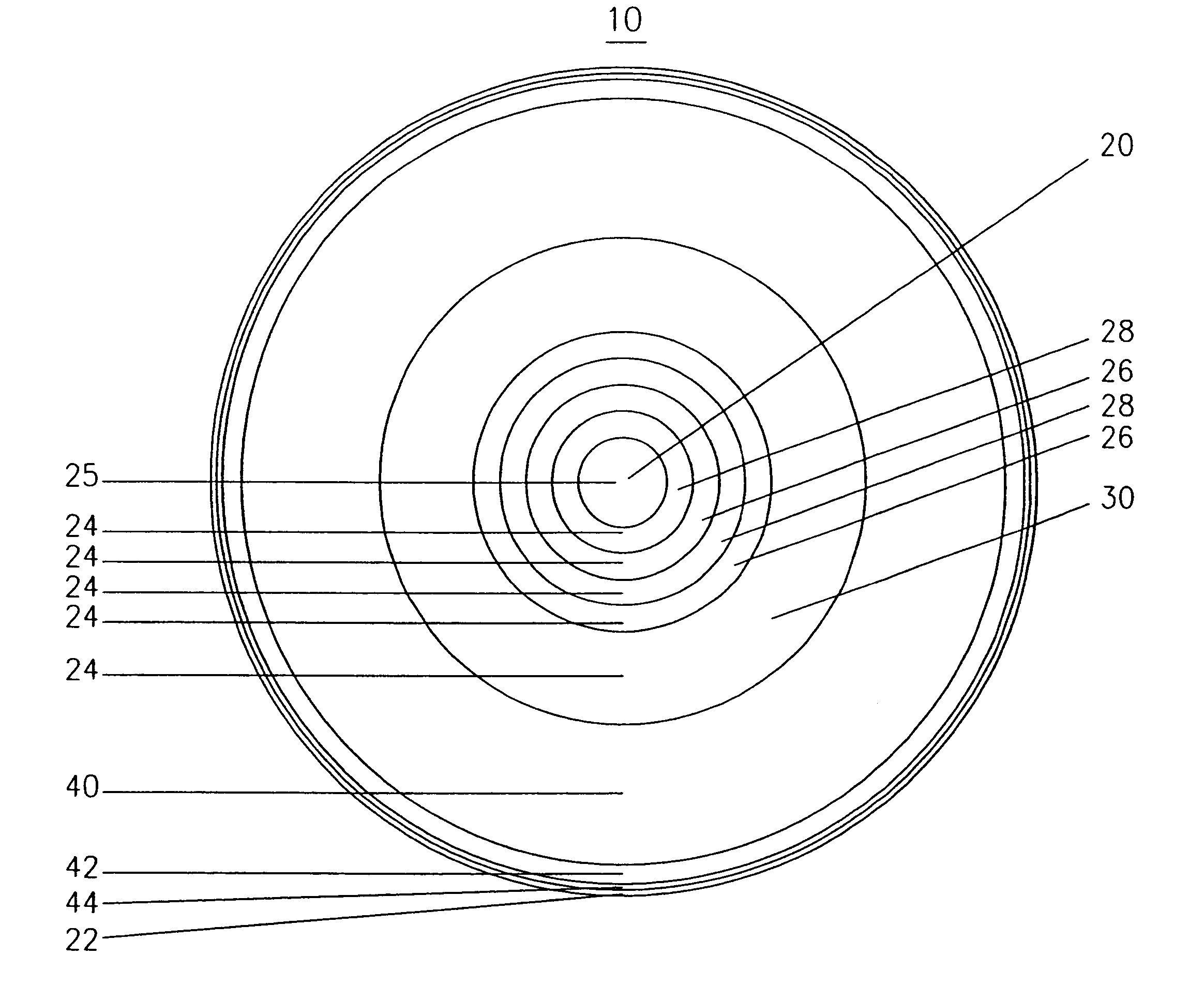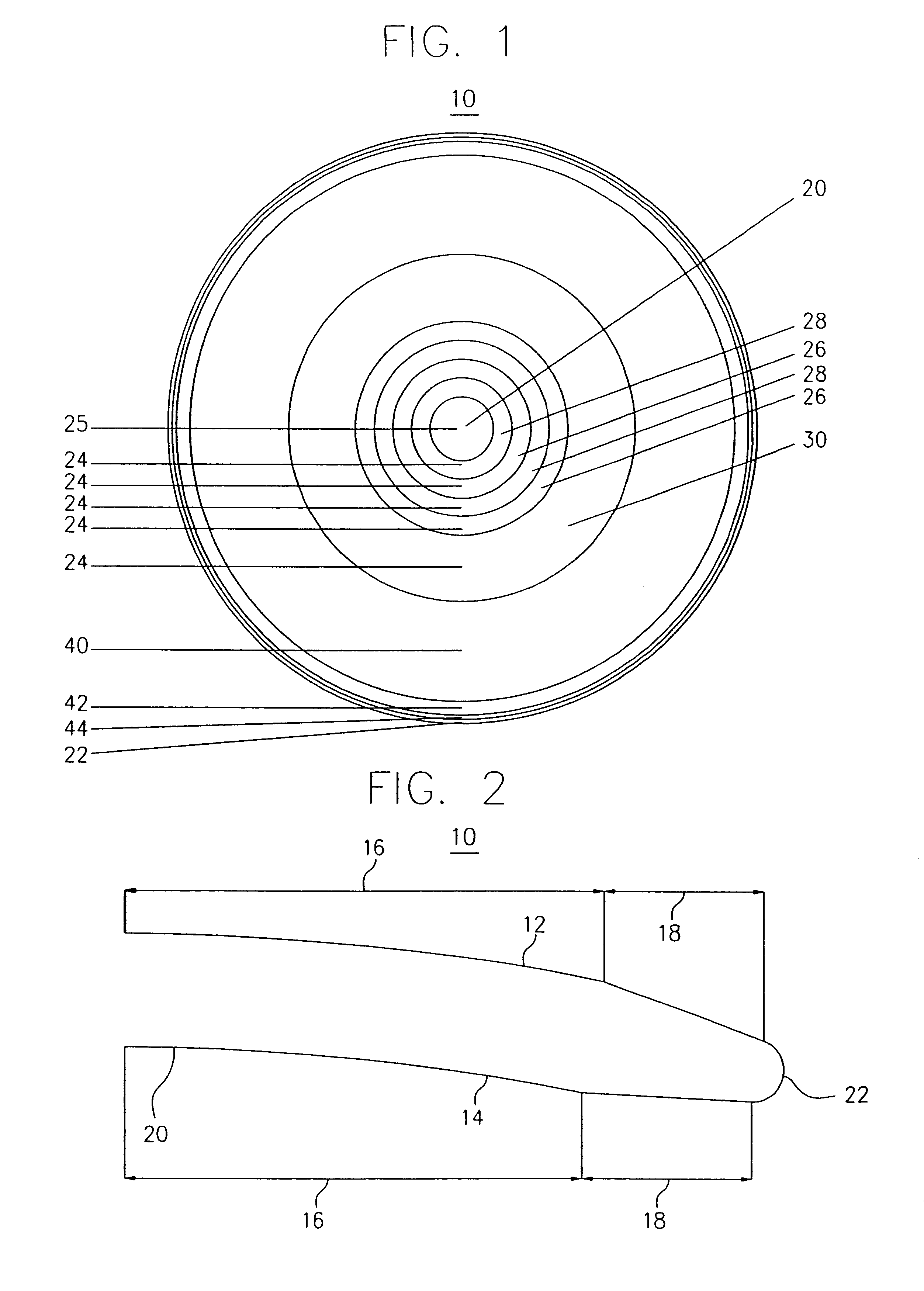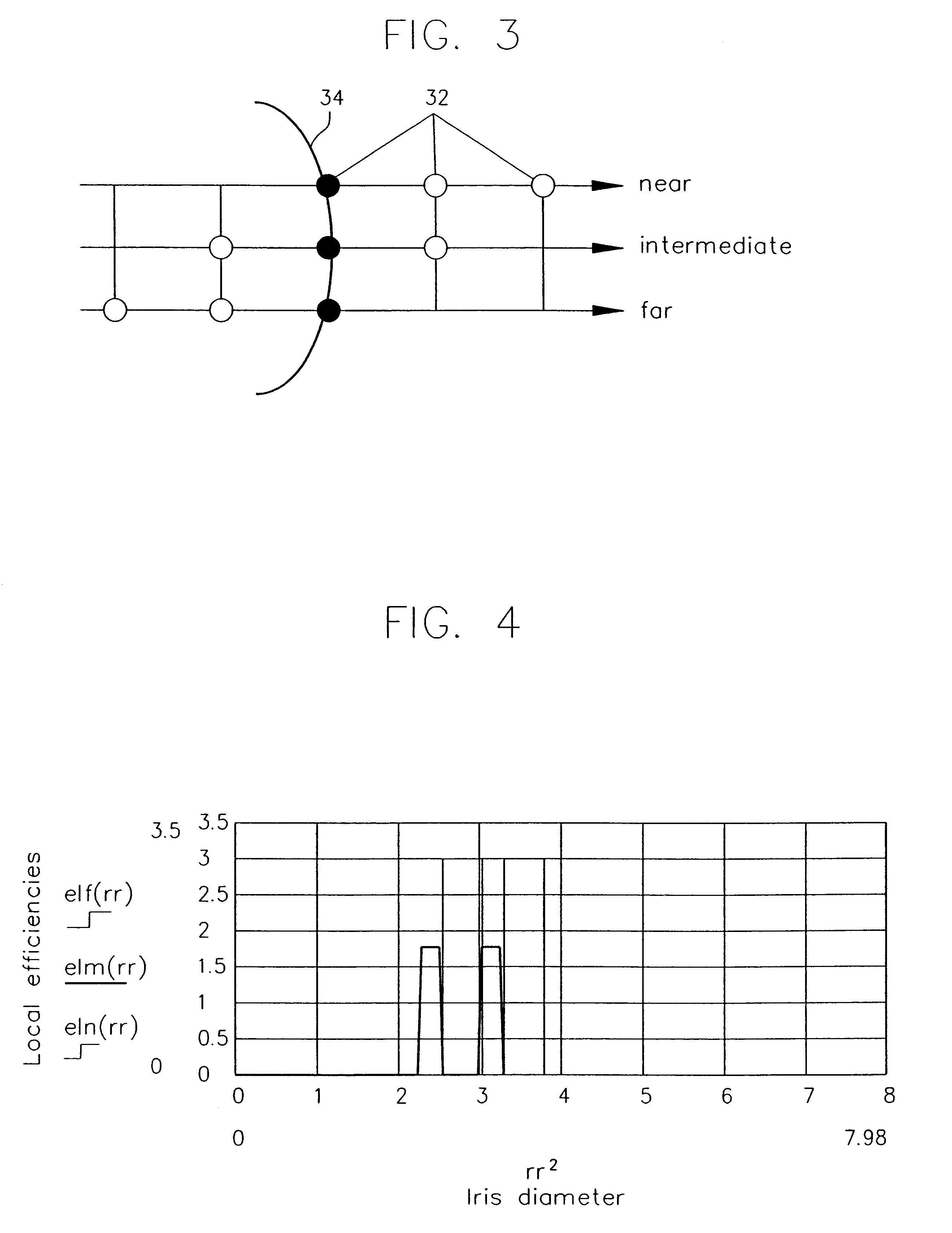Simultaneous multifocal contact lens and method of utilizing same for treating visual disorders
a multi-functional contact lens and simultaneous technology, applied in the field of multi-functional contact lenses and simultaneous methods of treating visual disorders, can solve the problems of less than optimal vision, less than satisfactory approach, and limited commercial success
- Summary
- Abstract
- Description
- Claims
- Application Information
AI Technical Summary
Problems solved by technology
Method used
Image
Examples
Embodiment Construction
Reference is now made to the following example, which together with the above descriptions, illustrate the invention in a non limiting fashion.
The focal property of the various focal regions of the lens of the present invention is achieved by changing the radius of curvature of the various regions at one or both of the smooth optical surfaces (back and front). For example, the back surface can feature piecewise smooth optical regions and periphery. The surface is then considered piecewise smooth instead of a fully smooth surface. This surface includes three foci regions or three types of objects distances: far, intermediate and near.
The contact lens according to the present invention is designed with consideration to the following parameters:
D.sub.far --optical power for far vision in accordance to prescription of the patient.
Add--addition in optical power for near vision, as is compared with far vision.
R.sub.b, ecc--radius of curvature and eccentricity of base curve in accordance w...
PUM
 Login to View More
Login to View More Abstract
Description
Claims
Application Information
 Login to View More
Login to View More - R&D
- Intellectual Property
- Life Sciences
- Materials
- Tech Scout
- Unparalleled Data Quality
- Higher Quality Content
- 60% Fewer Hallucinations
Browse by: Latest US Patents, China's latest patents, Technical Efficacy Thesaurus, Application Domain, Technology Topic, Popular Technical Reports.
© 2025 PatSnap. All rights reserved.Legal|Privacy policy|Modern Slavery Act Transparency Statement|Sitemap|About US| Contact US: help@patsnap.com



